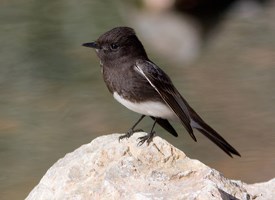This past week was the most full and exciting week yet! As said in our last post, we started the week with two days in Salinas teaching at La Joya elementary school and Gavilan View middle school. In two days we taught 380 students! Then, we headed just a bit further south and arrived at Carmel Middle School which had the best bird habitat we have seen on the entire coast! The outdoor space known as "The Habitat" was created from a vacant lot in 1995 by one of the school's past science teachers--Craig Hohenberger--who is actually an Ornithologist by profession. It is now teeming with bird life. Over one hundred and fifty species have been identified there! We got to work in the habitat for three full days and some students were able to meet with us every one of those days.
 |
| Taking notes on our observations |
On our first day, we were able to do an expanded lesson on sound and bird language. We broke down bird sounds for the students and taught them what to listen for. One can describe a bird sound in four general ways: pitch, volume, rhythm, and quality. We talked about how to describe bird sounds that you hear and even got to listen to bird songs at half speed. If you haven't done that yet, try it out!
 |
| Benny teaching about the five voices of the birds |
Additionally, we spoke to students about the five voices of the birds. One of the mentors on our naturalist journey has been renowned tracker and nature connection guru, Jon Young. Jon has developed incredible resources, programs, and books for naturalists of all levels to use in developing their skills. His newest book, "What the Robin Knows" is an entertaining guide to the meanings behind what birds are saying. Did you know birds tell us about all sorts of things from weather patterns to season changes and where the nearest bobcat or Cooper's Hawk might be? It just takes practice, as with any new language, but it is most certainly a learnable skill for all! Thankfully, Jon has helped to boil it down to five general voices of birds. Check out the whole world of
bird language!
 |
| Sitting and listening--what a pleasant activity! |
On the second day, we worked on bird identification and field journaling, and had great looks at the many bird species at the habitat. Before lunch, we attended the school gathering and were able to share about our tour down the coast in front of the whole school.
There are huge bird feeders there that attracted four species of sparrows, finches, goldfinches, chickadees, scrub jays, nuthatches, california quail, northern flickers, and more. Students combined birding basics with a little Jack Laws style journaling (check out his
work and workshops) and discovered just how fun it can be to discover which birds are living near.
 |
| Sit spot time for all! |
On the third day, we received a whole bunch of new students, as well as one class that came to our workshop for a third day. We needed something new for them so we designed a bird scavenger hunt deemed, "The Big Bird Blowout." Students put their knowledge of birds to the test, having to identify bird calls, think about habitat, and find different species within the forty minute time frame. We are impressed and convinced that there is a new crew of bird ninjas at Carmel Middle School.
Wrapping up our week at CMS we were sad to be leaving, but very grateful to the wonderful folks at Carmel Middle School and MEarth for having us. A special thank you goes to science teacher Darrell Steely for organizing such a grand hoopla of birding for all of his students and more. Also, thank you to Tanja Roos, executive director of
MEarth, the non-profit behind the CMS habitat.
 |
| The wonderful amphitheater at the CMS Habitat |
 |
| Teaching about nature journaling |
 |
| Observing birds at the feeders--look at those scientists! |
 |
| Showing off an awesome journal page! |
 |
| Birding with buddies |
 |
| Now that we have our journal entry, let's identify these birds! |
 |
| A stunning journal on the Chestnut-backed Chickadee |
 |
| Look at all that labeling, great observations! |
 |
| We got to talk to the ENTIRE school at their weekly "gathering" |
 |
| Journaling with friends is great! Look how wonderful these came out! |
 |
| Birding is always a great time to connect with friends |
 |
| Watching the feeders together |
 |
| Everyone had their binos on an elusive Bewick's Wren |
 |
| Scouring field guides during "The Big Bird Blowout" |
 |
| An action team of scientists--looking, listening, recording |























































